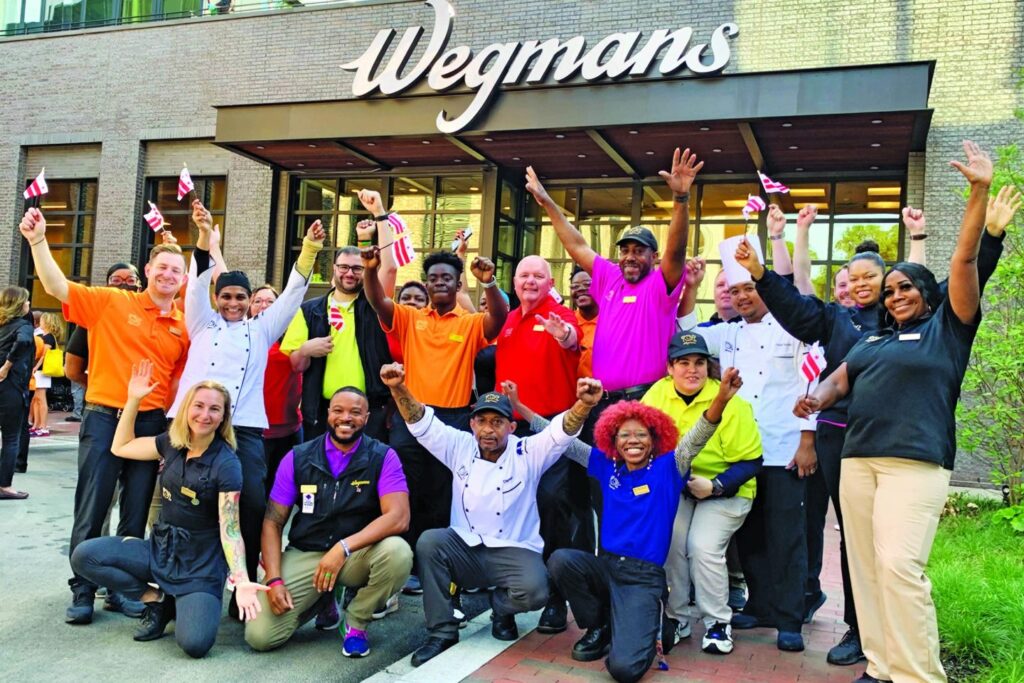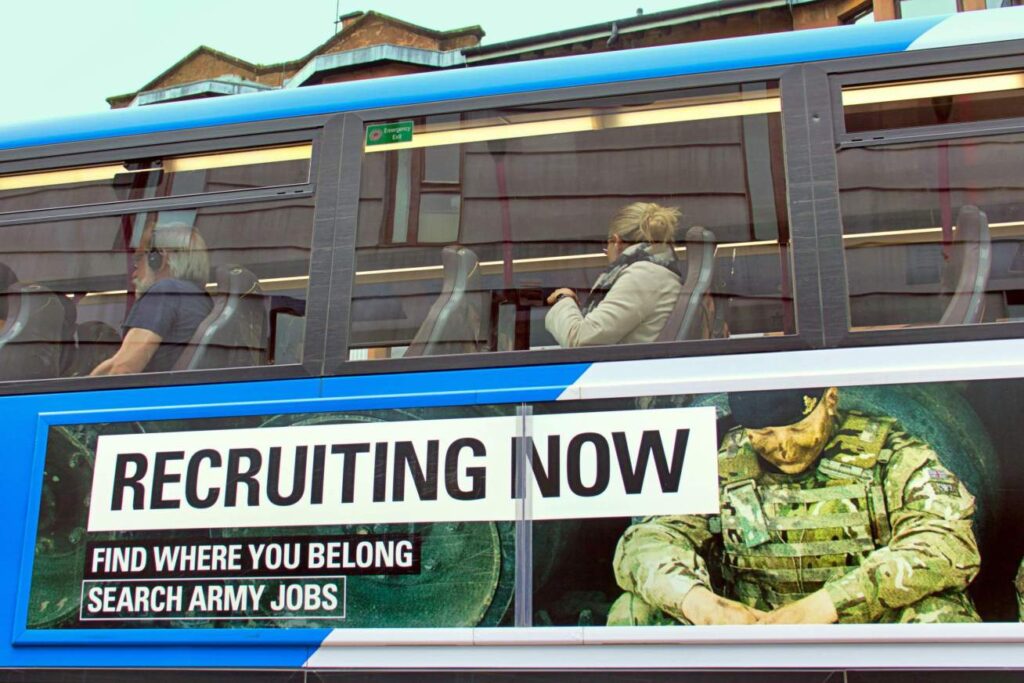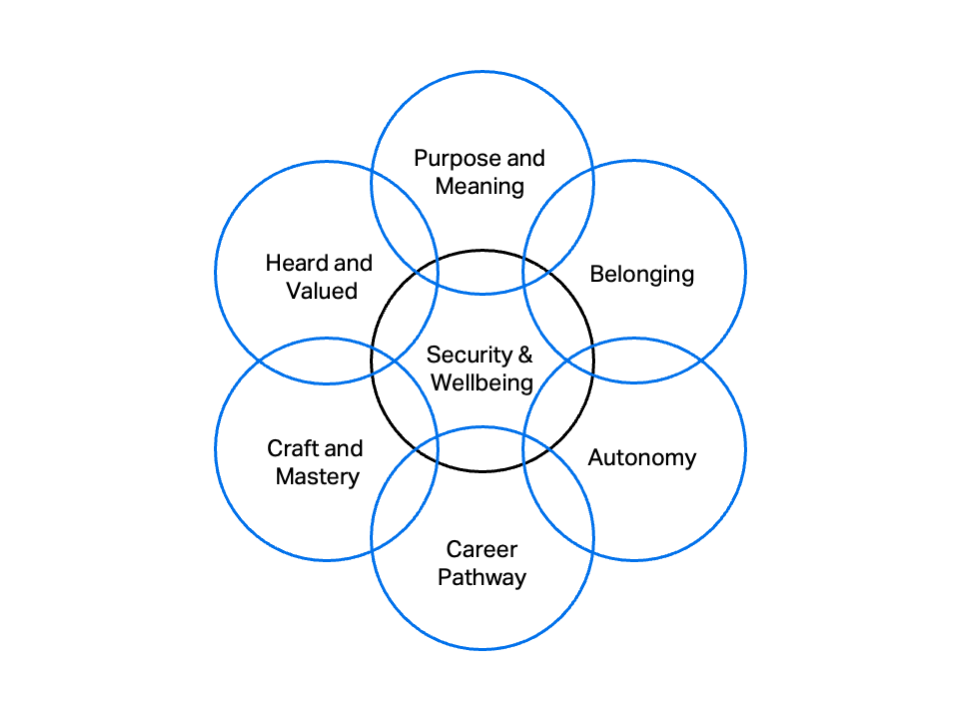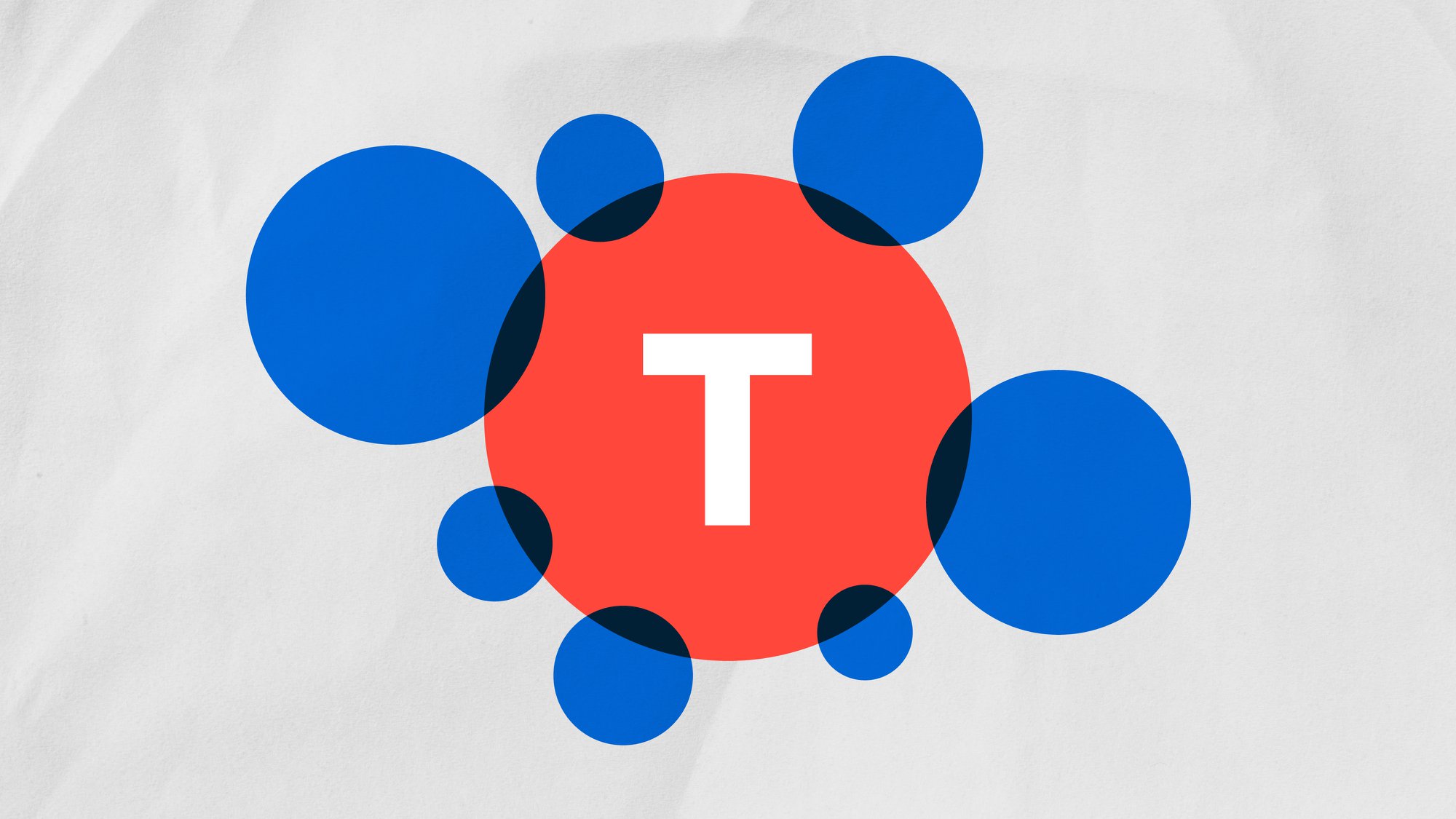8 Employee Levers for Low-Pay Employer Brands to Consider

At the Team, we have experience and expertise in developing Employer Brands and Value Propositions across a range of sectors. We’ve worked with banks, retailers, energy companies and manufacturers.
Today we’re asking, how can employer brands attract and retain talent in a low-attractiveness and low-pay sector?
Brands in hospitality, agriculture and retail sectors often face challenges in attracting talent due to perceptions of low pay, limited career progression, and demanding work environments. And let’s face it, we’ve probably all been there, working limited or zero-hour contracts for minimum wage. As a student, I remember working in hospitality and office facilities roles (otherwise known as cleaning) and I wouldn’t describe it as attractive. It was more a necessity, i.e. pay.
But no matter what area of work you’re in, be it cleaning, restaurants, supermarkets etc. you’ll need to build a team, or teams, that want to be loyal to you; a team that wants to go that extra mile; that wants to say great things about you now, and later in life.
And it’s very much about them wanting to do it. It’s unlikely they will go the extra mile because of the cash.
Back in my early days when I was the lead Internal Communications at The Body Shop, we managed to get this right. We balanced purpose (being a business pursuing social and environmental change), with mastery (giving teams the education they need to love the products and love the causes); with autonomy (giving retail teams more freedom to go to market in their own way.)
As Steven Vass says in The Conversation, “It genuinely felt like a brand that was for us. It cared about animal testing, it was one of the first major proponents of fair trade and it used refills and minimal packaging.” That feeling of being a “brand for us” came from creating teams that felt like they were selling that brand for themselves.
In this article, I outline 8 areas to consider
- Making it easy to apply from Day 1 and being quick with your decisions
- Build a strong Employee Value Proposition and Employer Brand
- Offering transparent communication on remuneration and benefits
- Creating flexible work arrangements and providing access to wellbeing services
- Focus on career development and training opportunities
- Recognising employee achievements and engaging them in purpose, and creating a sense of belonging
- Listening and acting on feedback
- Setting clear expectations from day 1 and keeping communication clear
Who is doing it well today?
Some retailers have implemented a range of practices to enhance their appeal and secure the workforce they need. As a business leader or owner you may be operating on the tightest of margins, but it’s more than possible to craft and deliver an employer brand that is going to make you attractive, drive performance, and create that magic output – employee advocacy.
As my colleague Mark Hauser pointed out in his blog about Timpson, the UK key cutting and shoe repair business, great employer brands are about “creating the optimal conditions and environment for the employee to thrive. Part of that ‘thriving’ will manifest through commercial delivery: win-win.”
Despite the difficulties facing a high street brand (and Timpson do come in for scrutiny), they still perform well by offering a strong training programme and ‘upside down management’ that results in store managers and teams experiencing more autonomy than competitors.
Wegmans, is a US family-owned supermarket chain. It’s consistently ranked among the top employers for satisfaction. Despite offering pay no better than other small supermarket retailers, Wegmans stands out for its training, flexible working, educational support offers, and a culture of true care. It’s a place where wellbeing matters. And it’s how Wegmans creates belonging.
The business does everything you’d expect. It has an employee ideation and listening scheme (“Ask Bob”), it has a detailed onboarding programme where managers take time to explain purpose and mission, and it focuses on strong manager/employee relationships.

So, what’s different? Well, Wegmans does it.
That may seem glib, but it’s a point worth making. Wegmans and Timpson work hard to make these things happen. And for Wegmans there is a little extra secret sauce.
Personalisation
When they join the business, workers complete a digital ‘People Profile’, so that they can identify what’s important to them inside and outside of work. From day 1, Wegmans is saying, ‘we are interested in you.’
This then allows for Wegmans to target the right type of content, experiences and training to employees so they can grow. As one employee said, “”I believe Wegmans is able to give every single employee an opportunity to grow. Whether that be within the company, as a professional, or even just as a person, Wegmans gives every employee what they need to be their best self. I have seen a great deal of people become more confident, more outgoing, and more professional while working here, including myself.”
I’ve seen similar personalisation happen in other brands. For example, employees simply being asked when they would like to receive internal newsletters and what the length of those newsletters should be. Content can then be delivered at a time and in a format that works for the employee.
As Peggy Riley, vice president of employee communications and engagement at Wegmens told Great Places to Work, “By encouraging employees to share their passions, we learn what they love to do and help connect that to their work at Wegmans, making their work even more meaningful and enjoyable.”
Being employee first and showing true care
This employee-first model is something that is not uncommon to high-performing organisations. As Kevin Stickles, the Wegmen’s vice-president for human resources says, “Our employees are our number one asset, period. The first question you ask is: ‘Is this the best thing for the employee?’ That’s a totally different model.”
Through The Team, I had the privilege of working with Jerönimo Martins on their employer brand (We Feed Futures). Their ‘Be a Leader’ programme has trained thousands of managers on differentiated training paths, and through individual coaching. It helps nurture the relationship between manager and employee. In low pay organisations, it’s this relationship that is so important.

So, if I had one dollar to invest, it would be in leadership communications development. It’s that relationship between manager and employee that will determine whether your employee value proposition lives or dies.
It’s 10-years old, but the Jospeh Rowntree report into low-paid workers is still illuminating. That report underlines that what works to build a sense of respect is the stuff within reach: open communication, feeling valued, and having a supportive team immediately around you. And that’s all down to small team cells working together.
That said, what are the key strategies to attracting talent if you are in that low attractive, low pay business?
I’ve listed 8 areas to think about below.
1. Make it Easy to Apply (from Day 1)
People do not want to be left waiting on a job, so it’s far better to go and collect a pipeline of interested parties and then trigger offers to interviews when the job is available.
Collecting information from people, like preferred hours, preferred locations and preferred role types will save them time and your business time. Bloom sports have done this well, albeit for senior executives. The right digital tools will help target the right candidates and streamline onboarding.
So, be quick in your decision-making. Long and drawn-out processes will leave you with employees who are either already disgruntled on day 1 or worse, you’ll lose them to someone else. If you can’t offer work within the month then are you thinking employee first?
And lastly, make it easy for your people to refer friends and family. If they know there is a simple reward for referring someone on, then they will do so.
2. Build a Strong Employee Value Proposition and Employer Brand
Build and promote a compelling Employee Value Proposition (EVP) that highlights your company values, mission, culture, and benefits. Make sure it cuts through the noise with stories and clear promises that define what you stand for. Is your promise about flexible working and having the chance to work when you need? Is it about the chance to build your career and learn a new skill? Is it about work-life balance? Is it about a supportive family culture?
Credit to TMP Worldwide. They have done a great job with the British Army Employer Brand. You Belong Here makes clear the camaraderie of the armed forces and that the army offers the opportunity to discover your own strengths and connect with others.

That said, the British Army has only achieved around 63% of its recruitment targets, but a lot of this must be put down to point 1 (Make it easy) rather than the articulation of its EVP or Employer Brand.
Whatever your Employer Brand is, be clear. For clarity, there are three parts to the Employer Brand: have a promise; know what the experience should be like; and define the deal (the EVP i.e. what you expect employees to give and what they get in return).
A robust Employer Brand will lower turnover, attract the right candidates and reduce wasted time during the selection process. Then use social media to target specific personas and increase your reach.
That may sound counter-intuitive, but you will want to reach as many of the right employees by telling stories about what you offer and your true DNA. Knowing what these employees look like (personas) will drive that and make the hiring process more efficient.
3. Offer Transparent Compensation and Benefits
Clearly disclose salary levels and rates of pay in job adverts and make sure that what you do pay is legal and competitive for the sector. There is nothing worse – in any field – than seeing a job advert that just says, ‘competitive rate of pay.’ If you know what you are going to pay – and you should – then be open about it.
Job descriptions and pay rates that are clear will reduce early turnover.
And then once onboard, allow employees to customise the benefits packages available, choosing to opt in and opt out of offers to suit their needs.
4. Flexible Work Arrangements and Wellbeing
Provide true flexibility in work schedules. Include options for part-time or remote roles. Allow for job sharing where two employees can cover one role. Flexibility is important for attracting and retaining younger workers, and it encourages workplace participation among all people. Flexibility gives people with different home situations access to employment – think of those people caring for older relatives or with children and no family support.
Wellness initiatives are essential. In fact, if employees don’t feel secure then they can’t perform to the best of their ability. Jerönimo Martins are brilliant at this. Showing true care for people is one of their EVP pillars : Prioritising employee well-being through programmes like mental health support, access to Employee Assistance Programmes, healthy eating and even a level of financial wellbeing support all helps underline security.
5. Career Development and Training
Invest in continuous learning, upskilling, and clear career advancement pathways. Highlighting opportunities for progression and development will stop a role being seen as a dead-end job.
And pay for it. Too many employers provide training opportunities that need to be completed in their own time. That’s a one-way street that is not sustainable and it’s one of the big bugbears among low paid workers.
The more you invest in internal mobility, promoting internal jobs postings and encouraging employees to try out for those roles, the more you will grow the confidence and skills of employees. You’ll unearth hidden talents.
6. Employee Engagement and Recognition
Celebrating achievements and milestones boosts morale. That can start at 6-months to a year, followed again by 2-years, the milestones need only be short, and the recognition does not have to be monetary. It’s about marking the achievement.
British Gas did this exceptionally well with their ‘Simply Thank You’ campaign, allowing peer-to-peer recognition for jobs well done, and creating a platform that truly transformed the culture of recognition across the business.
By implementing regular recognition programs and acknowledging hard work, you create a sense of belonging and purpose, as well as clarity around roles and expectations.
7. Listen and Act on Feedback
Regularly take time to listen to employees and show that their voices are heard and valued. In the long term, this will align your HR practices with employee expectations and grow loyalty.
8. Communication and Clear Expectations
I’ve mentioned clear job descriptions already, but you must also make sure you’re communicating clearly from the start. Onboarding processes set accurate expectations, and you need to make sure that week 1 includes an onboarding. Don’t just throw people into the fray without some 1-2-1 shadowing and support.
During induction, be clear about what is available to employees as well as what you expect from them in their roles (that EVP Deal again – the give and get.)
These seven areas all link to The Team’s seven levers for employee engagement (below). Contact us if you’d like to discover more about this.

And running through it all
I’ve resisted writing DEI. Why? Because it’s something that should run through everything you do. It’s not a tag on to the seven areas above, it’s a way of thinking.
DEI is not specifically about creating opportunities for under-represented communities, and it’s not just about making sure that all voices are heard, or that every community is able to access work opportunities.
It’s about creating a culture that broadens your talent pool and allows an environment to emerge where everyone feels welcomed, cared for, and appreciated.
It’s about making sure that you have that diverse pool of talent, because without, you risk not taking into account all experiences when you make business decisions.
Think about it. If you only have male voices and experiences in your business, can you truly understand the world through the non-male experience? If you only have one ethnicity on board then can you understand the world through the experiences of other cultures? If you don’t have neurodiverse voices in your business, then can you truly cater for those customers and employees living similar lives?




